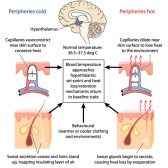Definition
noun
A menstrual cycle disorder experienced by certain women, and is characterized by menstrual cycles with intervals of 21 days or fewer
Supplement
Menstruation is the recurring discharge of blood, cervical mucus, vaginal secretions, and endometrial tissue of a nonpregnant females of humans and other animals (e.g. certain primates, shrews, and bats.1 There are instances though when menstrual period is different from the norm. For instance, polymenorrhoea, oligomenorrhoea, and amenorrhoea are menstrual disorders that are characterized by the disorders of the menstrual cycle length. Polymenorrhoea is the term used to refer to a menstrual cycle disorder wherein the cycles have intervals of 21 days or fewer. In women, the normal interval length (i.e. between the first day of a menstrual period and the first day of the next) is 21 to 45 days in young women, and 21 to 31 days in adults (an average of 28 days).2 In contrast, the menstrual cycle disorder, oligomenorrhoea, pertains to infrequent periods, i.e. intervals exceeding 35 days.
Variant(s):
- polymenorrhea (US spelling)
See also:
Reference(s):
1 Lopez, K. H. (2013). Human Reproductive Biology. Academic Press. p. 53.
2 Menstruation. Retrieved from https://en.wikipedia.org/wiki/Menstruation.







